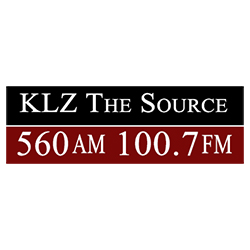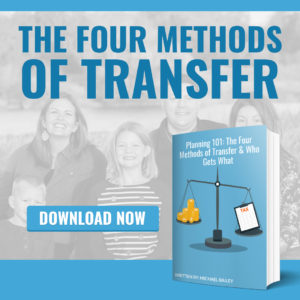
You spend hours setting up the perfect estate plan, and you are set up exactly the way you want. Everything seems perfect, and then it comes time to implement the plan. But wait, what is this? Your assets are transferring outside of the perfect plan? How can that be? What is going on? What happened? Is everything now ruined because of something outside of the estate plan?
In my last blog, I discussed the four main ways that assets transfer – a will, a trust, a transfer on death designation, and a beneficiary designation – when someone passes away. Each method has a purpose, with benefits and drawbacks. I briefly discussed beneficiary designations, by mentioning that Beneficiary designations are set up for popular and common accounts like and IRA, 401(k), 403(b), Roth IRA, Thrift Savings Plan, life insurance policies, annuities, or other similar investments or policies.
These types of investments are extremely common and popular, so I wanted to touch more on them and the importance of using beneficiary designations properly: How to set up beneficiary designations so that such designations agree with the rest of your estate plan, and how to avoid common errors connected to beneficiary designations.
Beneficiary Designations and Your Will
Most people think that if you describe an asset in your will, then the will controls what happens to that asset. This is a mistake. A will only controls assets the go through probate, and beneficiary designations will prevent an asset from becoming a probate asset. The beneficiary designation transfers assets pass outside of probate, so it is important to make sure that your beneficiary designations are up to date.
Just like a financial advisor will warn you about old 401(k)s from previous employers, and want you to address those financial accounts to bring everything in line with your current situation, I warn you about old beneficiary designations for old 401(k)s, IRAs, and other similar accounts. I cannot recall how many people I have talked to over the years who do not remember who they designated as a beneficiary when they started working. Perhaps it was a parent, from a time before someone was married.
Watch Out for Old, or Outdated, Beneficiary Designations
 Or, and this is often the case, a former spouse was designated as a beneficiary of a 401(k), IRA, or other financial account. Since beneficiary designations have often been established a long time ago, part of an estate plan needs to be revisiting beneficiary designations. When setting up an estate plan, we want all the parts of the plan to work together, including beneficiary designations.
Or, and this is often the case, a former spouse was designated as a beneficiary of a 401(k), IRA, or other financial account. Since beneficiary designations have often been established a long time ago, part of an estate plan needs to be revisiting beneficiary designations. When setting up an estate plan, we want all the parts of the plan to work together, including beneficiary designations.
It would be terrible to have a carefully crafted estate plan be disrupted by a beneficiary designation that named a former spouse as a recipient of an investment simply because beneficiary designations were not update, yet it happens all the time. I have even seen families sever long held relationships with the spouse of a deceased child when beneficiary designations on life insurance policies do not line up with a family’s expectations.
Use Beneficiary Designations the Right Way
- A far better option is to review your beneficiary designations on any account that may have them.
Make sure that beneficiary designation agrees with the remainder of your plan. That way, your beneficiary designations work in harmony with your other estate planning documents, and nobody gets confused or upset by an unexpected outcome.
Be Careful with Beneficiary Designations to Trusts
 If someone creates a trust, beneficiary designations that name the trust are often used to fund the trust at someone’s death. This makes for a seamless moving of assets into the trust, and helps accomplish the goal of consolidating assets into the trust for distribution to trust beneficiaries. However, when using beneficiary designations to transfer assets into the trust, there are a few important things to keep in mind.
If someone creates a trust, beneficiary designations that name the trust are often used to fund the trust at someone’s death. This makes for a seamless moving of assets into the trust, and helps accomplish the goal of consolidating assets into the trust for distribution to trust beneficiaries. However, when using beneficiary designations to transfer assets into the trust, there are a few important things to keep in mind.
A beneficiary designation to a trust on what is referred to as “qualified money,” or assets that received some sort of tax break, like an IRA, 401(k), 403(b), thrift savings plan, or other similar asset. Without proper planning, designating a trust as a beneficiary of these plans could result in an adverse income tax consequence.
If a trust is named as a beneficiary, the tax rules will default to saying the distribution out of a retirement account to the trust is a taxable distribution. A taxable distribution can result in up to 50%, or more, of the retirement account money being due to the Internal Revenue Service and a state tax authority, which is usually not what someone wants.
Most people want their money to go to their heirs, not the government.
To avoid a 50% or more tax on retirement accounts, then a trust needs to be structured property to accept such assets through a beneficiary designation. A trust can be structured so that a transfer from a qualified retirement account to the trust is treated not as a taxable distribution, but rather as a rollover of qualified money from one tax advantaged account to another tax advantaged type of account. This usually includes structuring a trust to set up a Stretch IRA account, so that more money goes to your heirs, and not to the government.
Set Things Up the Right Way
 Setting up a trust to get this right is highly technical, so I won’t bore you with the details in this blog. However, if you have significant assets in your retirement accounts, you will want to make sure a beneficiary designation works with your trust. Or, if you don’t have a trust, you still want to review your beneficiary designations to avoid problems that might not be obvious to you. Either way, it is best to work with a professional to make sure you are properly set. Go here to set up an appointment and get everything set up right!
Setting up a trust to get this right is highly technical, so I won’t bore you with the details in this blog. However, if you have significant assets in your retirement accounts, you will want to make sure a beneficiary designation works with your trust. Or, if you don’t have a trust, you still want to review your beneficiary designations to avoid problems that might not be obvious to you. Either way, it is best to work with a professional to make sure you are properly set. Go here to set up an appointment and get everything set up right!

 720-730-7274
720-730-7274









[…] Similarly, when setting up an estate plan, you can use a will, trust, beneficiary’s deed, beneficiary designation, or a combination of all these tools. An estate planning attorney can help you determine the […]